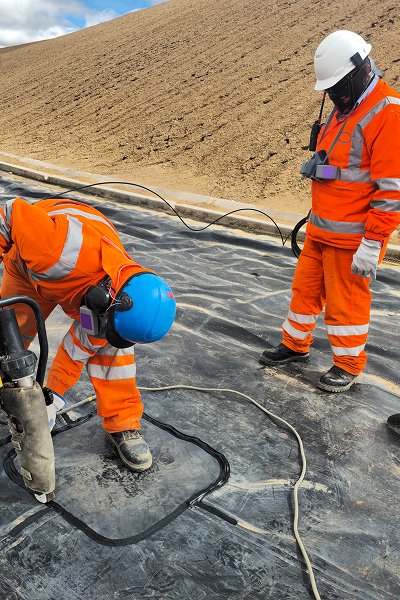Feel free to reach out to our customer support team. We’re happy to help!
Frequently Asking Question
You can reach us via email, phone. We’re here to help from 9 AM to 5 PM, Monday through Friday.
-
What are geosynthetics?
Geosynthetics are a class of polymer materials used to enhance soil performance and are widely used in civil engineering, environmental engineering and water conservancy projects. The main types include geotextiles, geogrids, geomembranes, geonets and geocomposites.
-
What are the main types and uses of geosynthetics?
• Geotextile: used for filtration, reinforcement, drainage and isolation, such as highway roadbed reinforcement and river bank protection.
• Geomembrane: used for anti-seepage, such as landfill and reservoir anti-seepage.
• Geogrid: used for reinforcement to improve the bearing capacity of soil, such as reinforced roadbed and retaining walls.
• Geonet: used for drainage, such as tunnel drainage system.
• Geocomposite: combined with two or more materials to improve the overall function, such as anti-seepage and drainage integrated materials.
-
What are the main differences between geotextile and geomembrane?
• Geotextile: mainly used for filtration, reinforcement and drainage, usually permeable.
• Geomembrane: mainly used for anti-seepage, usually impermeable.
-
How to choose the right geosynthetics?
When selecting materials, the following should be considered:
• Engineering requirements (anti-seepage, drainage, reinforcement, etc.).
• Material properties (tensile strength, water permeability, aging resistance, etc.).
• Environmental factors (temperature, ultraviolet rays, chemical corrosion, etc.).
• Construction requirements (laying method, joint treatment, etc.).
-
What are the key points of geosynthetics construction?
• Foundation treatment: ensure that the construction surface is flat and free of sharp objects to prevent damage to the material.
• Joint treatment: Geotextile can be overlapped, seamed or hot-air welded, while geomembranes are often hot-welded or glued.
• Anchoring measures: The edges need to be anchored to prevent displacement or tearing.
• Protective measures: Avoid long-term exposure to ultraviolet rays and cover the soil layer as quickly as possible.
-
What are the welding methods for geomembranes?
Common welding methods include:
• Double-track hot-melt welding (Hot Wedge Welding): Applicable to HDPE geomembranes, with high strength and good sealing.
• Extrusion welding (Extrusion Welding): Used for repairs, complex joints or small-scale connections.
• Solvent welding (Solvent Welding): Applicable to PVC membranes, softened and bonded by chemical solvents.
-
How long is the service life of geosynthetics?
The service life depends on the type of material, construction quality and environmental conditions:
• Generally speaking, geotextiles can reach 10-50 years, and geomembranes can reach 20-100 years (such as HDPE membranes can reach 100 years under good conditions).
• Ultraviolet rays, temperature changes, chemical corrosion and other factors will affect the service life, and appropriate protective measures should be taken.
-
How to test the quality of geosynthetics?
Common test items include:
• Tensile strength (determine tensile strength and elongation)
• Permeability coefficient (evaluate anti-seepage performance)
• Thickness and quality inspection (ensure compliance with standards)
• Anti-aging performance (UV aging test)
• Peel strength (weld quality inspection)
-
What is the environmental performance of geotechnical materials?
• Many geosynthetics, such as HDPE geomembranes, have good chemical corrosion resistance and are suitable for environmental protection projects such as landfills.
• Choosing materials that meet environmental standards and ensuring construction specifications can reduce the impact on the environment.


